
The Medici Palace or Medici Riccardi Palace (Palazzo Medici Riccardi, Palazzo Medici Riccardi, Palazzo Medici) is a historic Renaissance palace in Florence, which was the first residence of the Medici, and today it is a famous museum with halls, the Chapel of the Magi, courtyard and adjacent garden.
Famous masters and artists such as Michelozzo, Donatello, Michelangelo, Paolo Uccello, Benozzo Gozzoli and Botticelli worked in the palace.
The double name of the palace "Medici - Riccardi" comes from two influential families who owned the palace during its history.
The history of the monumental building of Florence with residences and other buildings of the influential Medici family began with this palace.
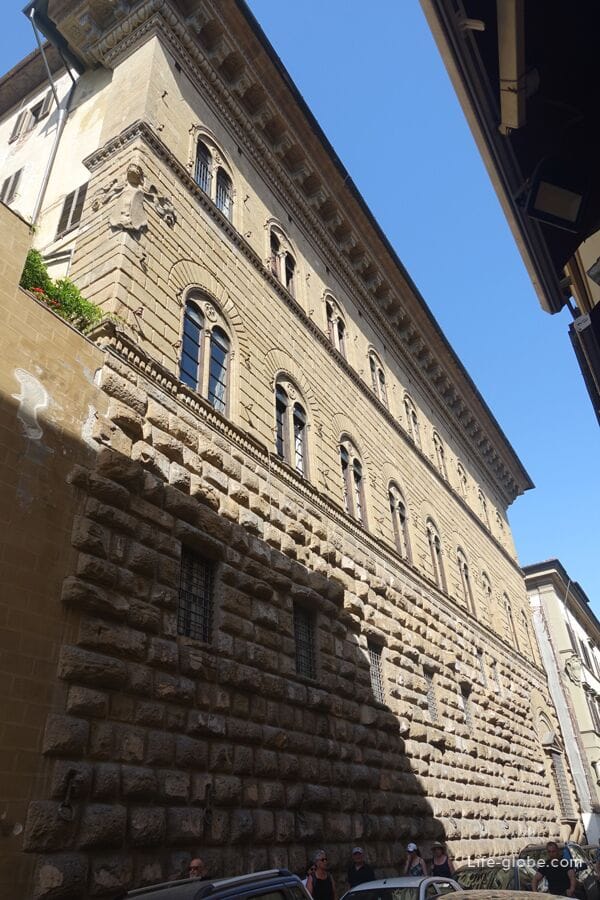
The palace was built between 1444 and 1484 by the architect Michelozzo di Bartolomeo. The palace was built by order of Cosimo de' Medici "Old", as a private residence for the Medici family of Florence.
In addition to a private residence, the palace also served a public function; it was visited by prominent political figures, including Galeazzo Maria Sforza, depicted in the chapel of the Magi of the palace with members of the Medici family.
At the end of the 15th century, the Medici art collections were kept in the palace. In the courtyard there was a bronze statue of "David" by Donatello (after the expulsion of the Medici, Donatello's "David" and "Judith" were moved to the Palazzo della Signoria). There were paintings in the rooms: Paolo Uccello's "The Battle of San Romano", as well as works by Botticelli, Verrocchio, Pollaiolo, Domenico Ghirlandaio, collections of precious cameos, vases made of semi-precious stones and rock crystal, and so on.
The young Michelangelo lived in the Medici Palace, where there was also a circle of Florentine humanists. On April 17, 1459, the fifteen-year-old Galeazzo Maria Sforza, the future Duke of Milan, visited the palace.
The palace remained the main residence of the Medici family until the expulsion of Piero de' Medici in 1494. After the family returned to power (1512), the palace continued to be used by the Medici until 1540, when Cosimo I de' Medici moved his main residence to Palazzo Vecchio. After the Palazzo Medici continued to be used as a residence for younger family members, until the palace, too strict for the tastes of the Baroque era, was sold in 1659 by Ferdinando II dei Medici to Marquis Gabriello Riccardi. Riccardi expanded the palace to the north and restructured its interiors with luxurious Baroque interventions, also commissioned the creation of a gallery of the palace with frescoes depicting the Apotheosis of the Medici by Luca Giordano. The Riccardi family, due to spending on a luxurious life, was forced to sell the palace to the Tuscan state in 1814.
Today, the historic Medici-Riccardi Palace is an outstanding architectural monument and a classic example of Renaissance civic architecture in Florence and beyond.
Externally, the palace looks quite strict, which was acceptable to Cosimo de' Medici, who did not want the envy of the townspeople. The three-sided elevation of the palace walls expresses the Renaissance spirit of rationality, order and classicism. This three-part division is emphasized by horizontal string rows that divide the building into descending floors. The palace is crowned by a massive cornice, which clearly defines the outlines of the building.

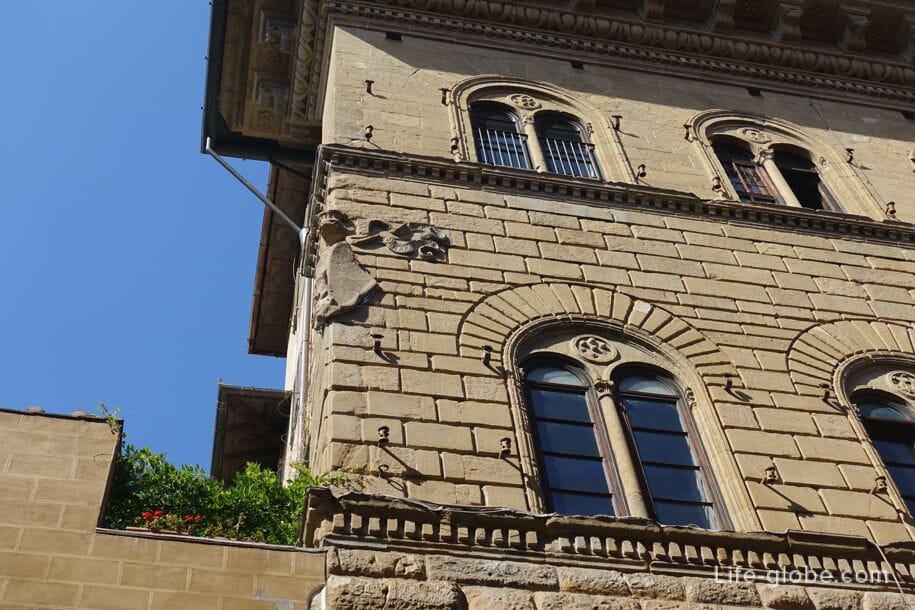
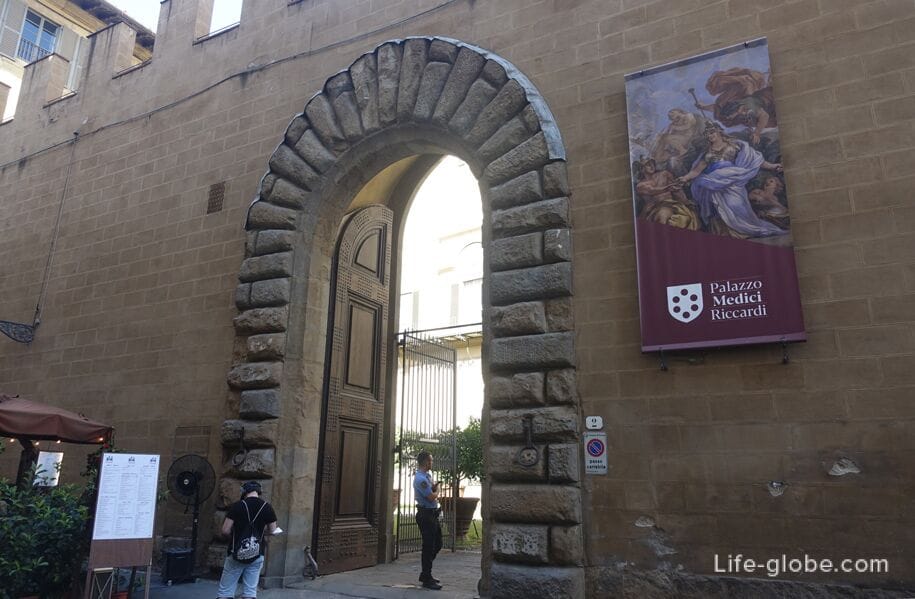
Despite the rather modest appearance, the interior of the Medici Palace stood out with sophistication.
Within the walls of the palace there are courtyards, a small garden with sculptures, the famous chapel of the Magi, as well as halls, rooms and utility rooms.

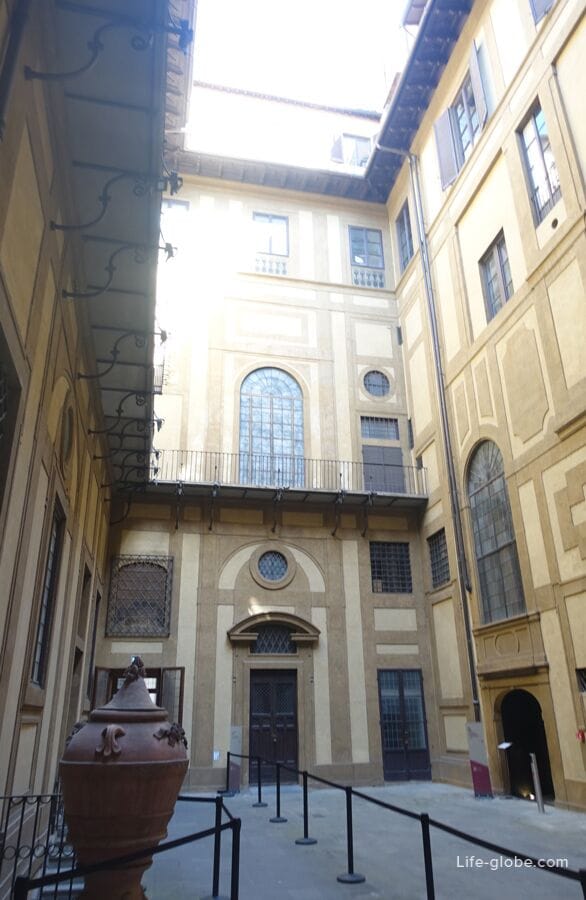
The former underground premises, formerly the Medici stables, and then the Riccardi cellars, have now acquired a new and authoritative dignity, combining modern architecture with evidence of the past.

Temporary exhibitions are held in the historical halls on the ground floor.
One of the impressive halls of the palace is the Gallery of Luca Giordano (1682-1691). In the gallery, the decoration of mirrors echoes the majestic vault painted by Luca Giordano with frescoes depicting the Apotheosis of the Medici.

The famous Chapel of the Magi (1459-1561) stands out with frescoes by Benozzo Gozzoli and depicts members of the Medici family with famous people.
The chapel housed Filippo Lippi's painting "Worship in the Forest" as an altarpiece. Lippi's original is in Berlin, and a copy of Lippi's follower replaced the original in the palace.
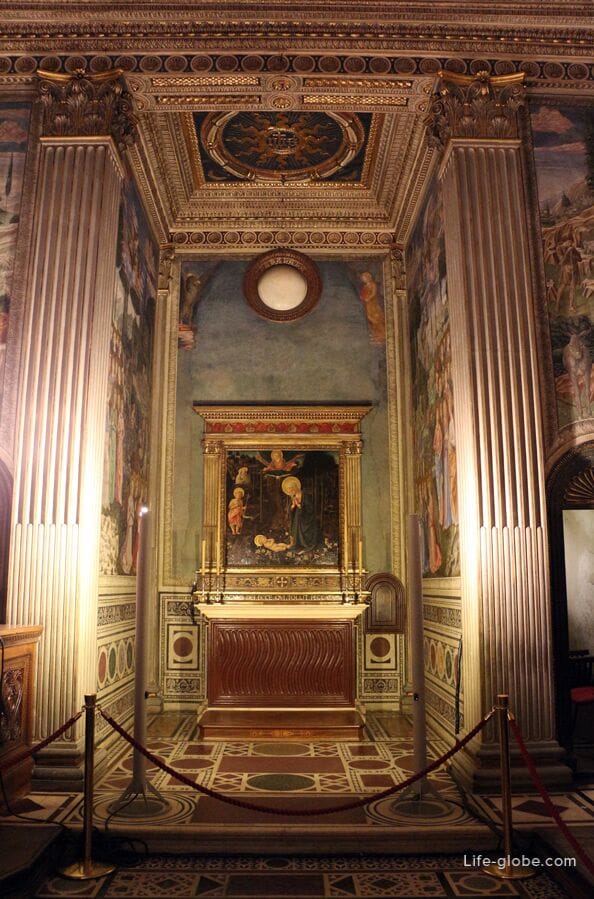
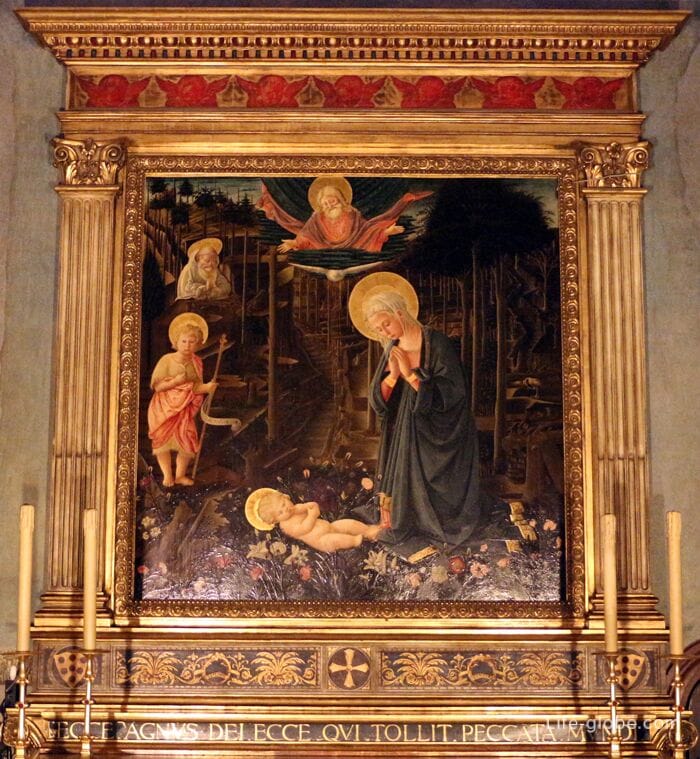
Notable in the palace are other works by famous masters, including the Madonna and Child (1466-1469) by Filippo Lippi, depicted walking towards her son.
The inner square courtyard (cortile) of the Medici Palace is an elegant Renaissance courtyard designed by Michelozzo (1444-1452). Concerts are held in the courtyard.
The first floor of the courtyard has loggias with "arcades on columns" and ends with a high frieze with medallions depicting the Medici coats of arms against the background of frescoes (recreated) with garlands of Maso di Bartolomeo. The second floor with Venetian windows is decorated with graffiti "under rust". On the third floor there is a loggia with Ionic columns (now glazed).
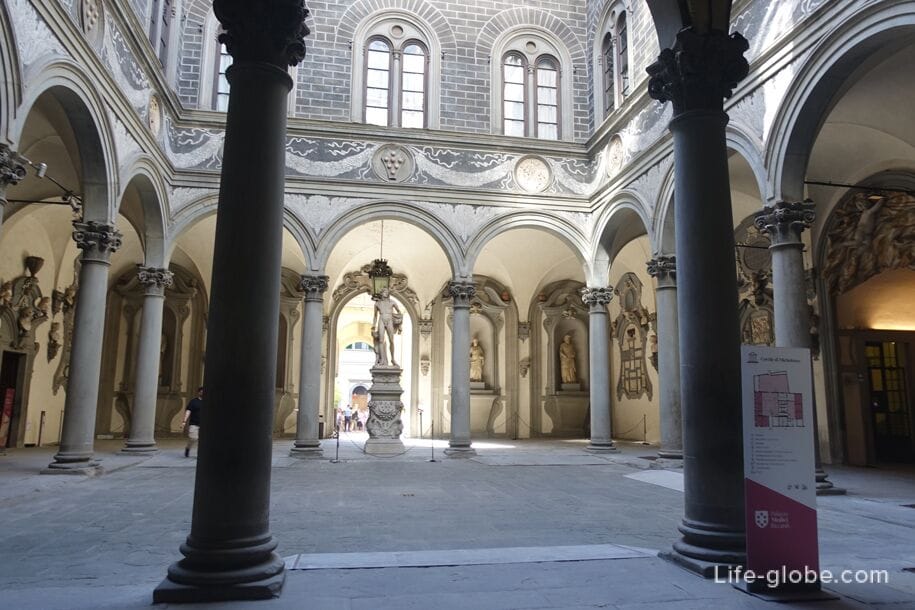

An integral element of the private life of the Medici family and the palace itself is a small adjacent garden (Giardino Di Palazzo Medici Riccardi) or a second courtyard decorated with sculptures and where fruit trees grow.
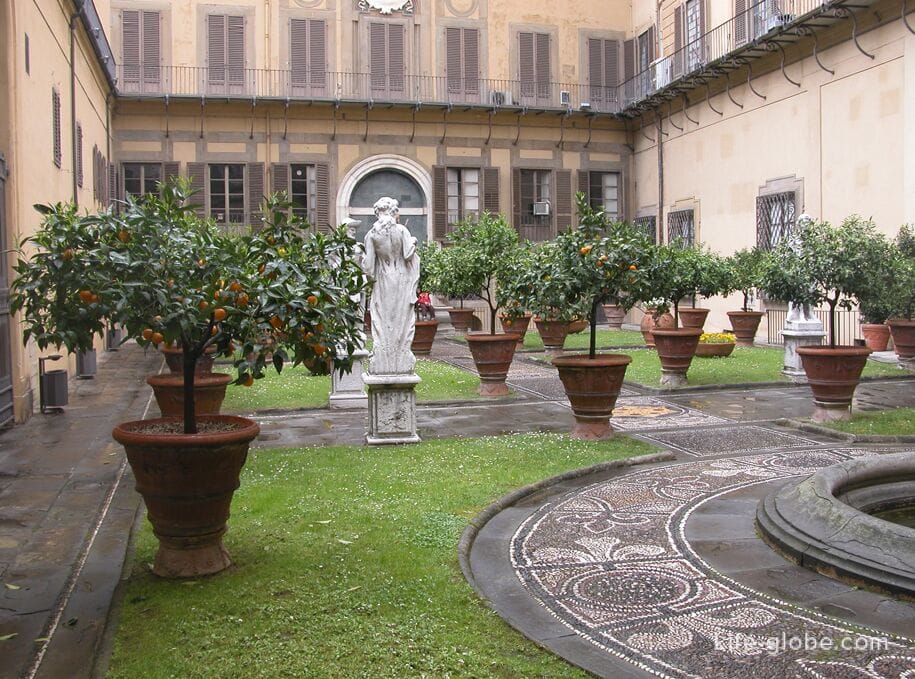
Entrance to the Medici-Riccardi Palace is paid.
There are various types of tickets, as well as preferential and free admission, including for children under 17 and the disabled.
Tickets can be purchased at the ticket office of the palace.
The cost of tickets, opening hours of the museum-palace, exhibitions and concerts, we recommend checking on the official website of the Medici-Riccardi Palace: palazzomediciriccardi.it .
Address of the Medici Riccardi Palace (entrance): Via Cavour 1, 50121 Firenze.
Coordinates of the Medici-Riccardi Palace: 43°46'31.0"N 11°15'21.0"E (43.775278, 11.255833).
All accommodation facilities in Florence (hotels, apartments, guest houses, etc.), including in the historical center of the city and more remotely from it, can be viewed and booked here